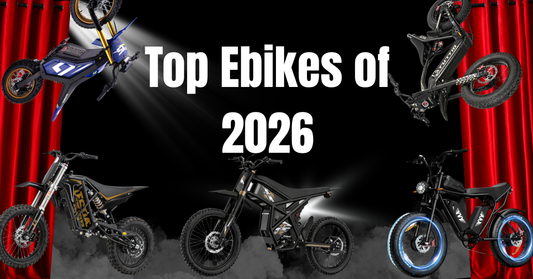When considering an electric bike, one of the most important questions riders ask is: how long will the e-bike ride on a single battery charge? For riders eyeing Riding Times e-bikes, understanding the realistic riding times on single versus dual batteries and how the bike drains its battery power can help optimize ride experiences and expectations.
Understanding Riding Times e-Bikes, and Battery Range
Riding Times e-bikes come equipped with powerful motors and lithium-ion batteries designed to offer substantial riding times. The range on a single battery depends on factors such as battery capacity, riding mode, terrain, and rider weight. On average, a single 48V 15.6Ah battery delivers around 25 to 30 miles of riding range, combining pedal-assist and throttle modes, based on real user tests of models like the Z8. However, riders seeking longer adventures can opt for dual battery setups that double the overall energy capacity, pushing ranges up to 60 miles or more in ideal conditions.
Does the Riding Times e-Bike Drain Both Batteries Simultaneously or Sequentially?
A common question among Riding Times e-bike users is whether dual batteries drain simultaneously or one after the other. The design of Riding Times dual-battery e-bikes typically follows a sequential battery drainage system. This means the bike fully depletes the main battery first, then switches to the secondary battery. This sequential draining helps effectively monitor battery status and maximizes use before requiring a recharge. Riders appreciate this system as it avoids uneven wear and allows for clearer expectations of when to recharge each battery.
Key Factors Influencing Riding Times e-Bikes Riding Range
While battery specifications provide a general range estimate, real-world riding times can vary widely due to:
- Riding Mode: Higher speed modes like throttle-only or turbo drain batteries faster than pedal-assist modes.
- Terrain: Hills, rough surfaces, and off-road trails demand more power and reduce riding times.
- Rider Weight: Heavier riders or those carrying loads use more battery energy.
- Speed: Faster speeds use more battery power.
- Weather Conditions: Wind resistance and temperature can impact efficiency.
Understanding these factors enables riders to better plan their trips and battery management.
Maximizing Riding Times e-Bikes Riding Range
To optimize Riding Times e-bikes:
- Use pedal-assist mode more frequently than throttle-only mode.
- Avoid aggressive acceleration when possible.
- Maintain proper tire pressure for efficient riding.
- Recharge batteries fully and charge both batteries regularly.
- Keep bike components well-maintained to avoid unnecessary energy loss.
By following these tips, riders can get closer to the advertised ranges and enjoy longer rides.
Comparison of Riding Times Model Ranges and Batteries
Here’s a quick look at some Riding Times' popular models and their typical range and battery setups:
| Model | Motor Power | Battery Setup | Max Speed | Max Range (Miles) | Torque (N.m) |
|---|---|---|---|---|---|
| GT73 | 2400W | Dual 48V 18.2Ah | 37 MPH | 68 - 155 | 106 |
| GT73 Pro | 3000W | Dual 60V 18Ah (36Ah) | 50 MPH | 87 - 174 | 338 |
The dual battery option on the GT73 Pro significantly extends ride time, making it ideal for longer rides or off-road adventures where charging opportunities may be limited.
For more information on specific Riding Times models and maintenance tips, visit the official Riding Times product page on Ridert.com to explore detailed specs and guides.
Additionally, for broader e-bike insights and user reviews, check out resources like Ebike Daily, which provide in-depth analysis of Riding Times Z8 and comparable models in the market.


